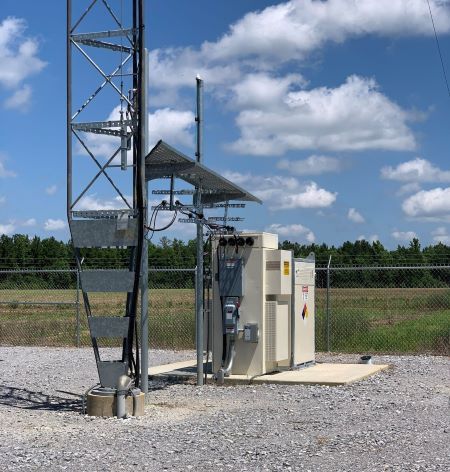Resiliency & Sustainability: the One-Two Punch for Fuel Cells and Hydrogen in Stationary Power
Outages and blackouts threaten to plague electricity grids around the world, with potentially dire consequences for essential institutions and critical infrastructure. Increasingly, hospitals, schools, communications providers, manufacturers, and data centers are committing to near term sustainability goals – and that leaves the door wide open for hydrogen and fuel cells to ensure business continuity. But backup power is just one reason this versatile technology is making waves; it also delivers much-needed environmental gains.
A 2020 report from the United Nations Office for Disaster Risk Reduction stated that worldwide costs of climate-related natural disasters – earthquakes, floods, hurricanes and such – have surged to total nearly $2.97 trillion over the last 20 years, with 7,348 major recorded disaster events from 2000 to 2019. This is sharply up from the 4,212 events from 1980 to 1999. Restoring downed grid power and communications networks in devastated areas is no easy task. With data showing a sharp increase in the rate of these disasters, perhaps the best way forward is to continue to focus efforts on mitigating climate change while improving disaster recovery and resilience through zero emission backup power. One solution taking a bite out of both issues, is the innovative hydrogen and fuel cell solutions that can provide continuous backup power for the days (if not weeks) it takes to restore this critical infrastructure—enabling recovery teams to complete their work under the toughest conditions. On Earth Day 2021, U.S. President Joe Biden formalized a new target for the U.S. to cut its emissions by at least 50% by 2030. Commitments from the European Union, South Korea, Australia, and others have tapped hydrogen and fuel cells as a key solution to tackle climate change and resiliency.
Renewable Energy Trends
Effective recovery from service-interrupting events includes having power and communication systems that have been designed for resiliency. The number of stationary power applications being served by hydrogen and fuel cells continues to increase.
The growth in cloud computing has led to large corporations building ever-larger data centers, which require highly reliable backup power to serve their clients during grid power outages. Data center operators are actively searching for alternatives to large diesel generators. Microsoft, one of the world’s largest data center operators, announced they will eliminate diesel fuel by 2030. Chief Environmental Officer, Lucas Joppa, stated, “While diesel fuel accounts for less than 1% of our emissions, we believe it’s important to help accelerate the global transition away from fossil fuels and we are charting a new course using low-carbon fuel sources including hydrogen.”
Google has made a commitment to operate on 24/7 carbon-free energy in all its data centers and campuses worldwide by 2030. Amazon, the largest U.S. e-commerce company, pledged to make its operations net carbon neutral by 2040. And Walmart announced that it is targeting zero emissions across the company’s global operations by 2040.
The U.S. telecom landscape is dotted with more than 4,800 fuel cells. In the Southeast, Southern Linc has been installing an LTE network utilizing 500+ fuel cells for backup power. Fuel cell power was also a strong solution for critical telecom locations during and after 2020’s Hurricanes Sally and Zeta, providing more than a cumulative 6,800 hours of ongoing power for communications sites with some sites operating for more than a week on backup power, while utilities worked hard to repair grid service.

Microgrids are another way communities and businesses are dealing with uncertain grid power in a sustainable way. By combining a number of power technologies, both storage and generation, a microgrid can supply primary, supplemental, or backup power to the facility it serves—going into “island mode” when grid power is unavailable for some reason.
Transportation, already being served in some capacity by motive fuel cells and hydrogen, includes applications for stationary power as well. Railroad crossings, road signage, electric vehicle charging stations, and port electrification are just a few of the growing number of other places hydrogen and fuel cells can help to decarbonize mobility.
What are the benefits of sustainable energy for stationary power applications? We already know that clean energy produces no emissions. It’s good for corporate – and global – sustainability goals, decreasing the greenhouse gas load we ask our planet to carry. Renewable energy also increases resiliency after storms. When utility grids are damaged due to wind, ice, or fallen trees, hydrogen and fuel cells are designed to continue providing power. Power means critical communication lines, data centers, hospitals and other businesses and applications stay operational. With costs dropping, and also subsidized by federal tax credits in the U.S., clean power is in many cases cost-competitive compared to traditional diesel generators. For many sites, the question is why NOT consider using hydrogen and fuel cell power.
Disasters cannot be prevented – and seem to be something we can count on increasing for the foreseeable future. However, the development and implementation of a plan for energy during both short-term outages and disaster recovery is one of the many essential activities businesses continue to focus on. Lessons learned from recent high-profile disasters and experiences in the U.S. and developing countries provide practical insights into what constitutes a viable solution – a power solution that includes both resiliency and sustainability.
As Winston Churchill once said, “I never worry about action, but only about inaction.” Truer words were perhaps never more relevant than today.